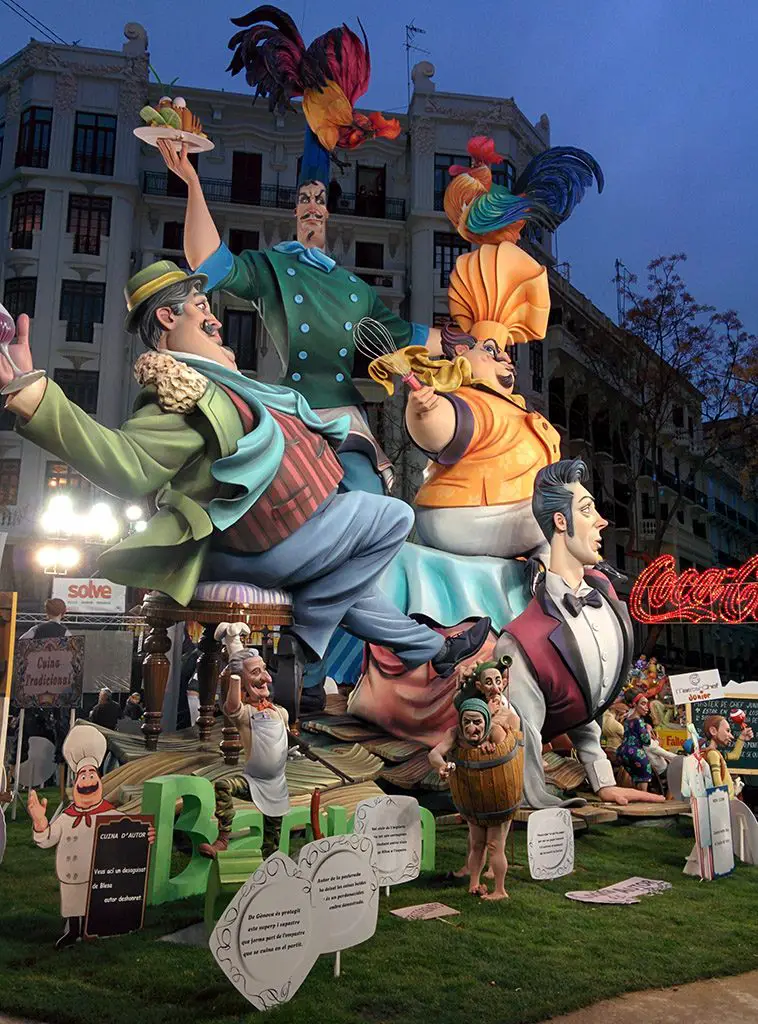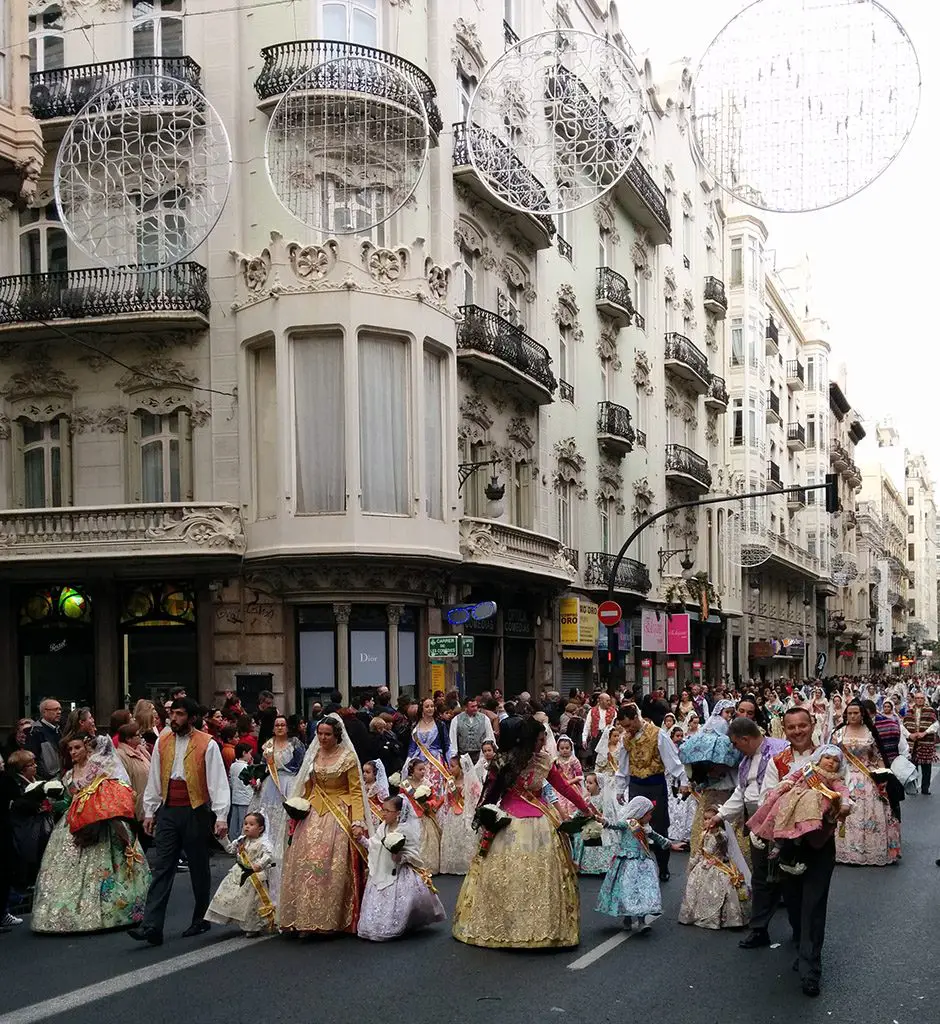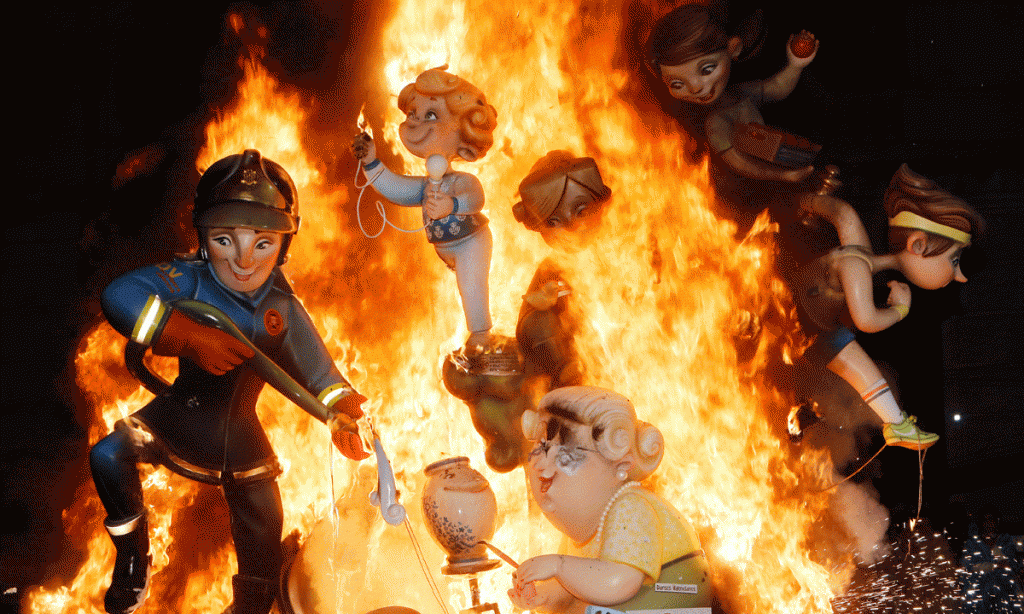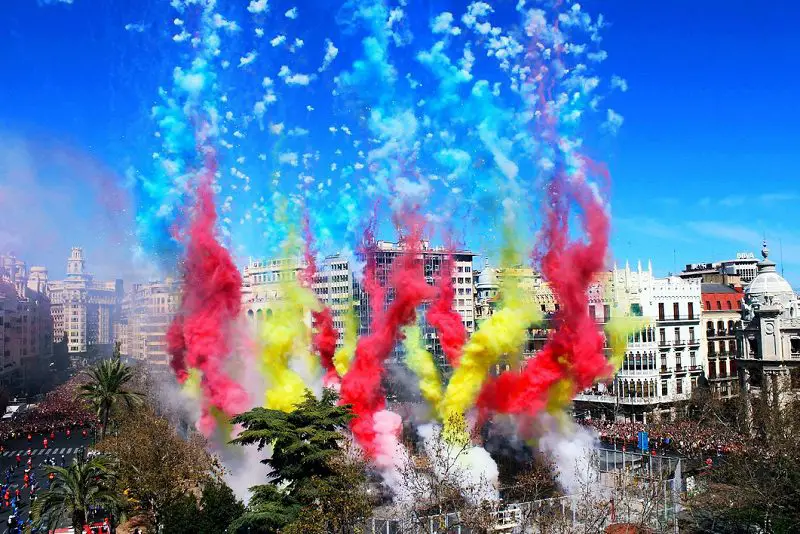We cant! If you mixed a week-long street party with massive street sculptures, firecracker symphonies, nightly fireworks and a huge citywide burning of said sculptures we’d still only be scratching the surface of Las Fallas Festival.
Las Fallas Festival
Started over a century ago a curious tradition formed around the annual spring cleaning when old furniture would often be put on the street as rubbish and then lit on fire by locals just for kicks. Somehow each neighborhood started making a party of the whole thing, but it took a curious twist. People started to spend their time making sculptures of the used furniture which personified the political foibles of the day and then afterwards lightheartedly burned them together on the third Sunday in March. Somehow this all became a bit competitive too. Who would have the biggest and best Falla that year?

Falla
This tradition of renewal and lighthearted critique of the powers that be took hold and began to develop. The size of the sculptures (the Fallas) and their complexity and beauty increased (actually you can see some of the original Fallas in the Museum of the Fallas here in Valencia, Spain) and other aspects of the festival also grew from it. The Catholic Church got in on the action with an enormous Madonna and child figure in the center of the city completely woven with flowers standing before an ocean of flower offerings from each district of the province (this gets built usually on the Thursday before the final Sunday). Marching bands wearing traditional costumes abound during Las Fallas and people wear extraordinarily complex historical attire that cost thousands of euros each.

Falla
In the center of the city, each day at 14:00 during the Fallas in the main city square, the Plaza de Ayuntamiento, is the mascletá, the largest ignition of firecrackers you will ever hear. Thousands gather daily for this heart-pounding action when a different district each day takes turns to compete with their own 5-minute symphonic version of exploding art. Make sure you wear earplugs for this one! The mascletá can be heard for miles around. In addition, during the Fallas, there is a generally constant explosion of smaller fireworks and firecrackers to celebrate the coming of spring. It is very common to see little children with lit wicks playfully tossing firecrackers around the streets late into the night with the adults!

Mascleta – Las Fallas Festival
Street parties abound with open air bars and concerts around each neighborhood and their Falla. It would take many days (and many mojitos!) to make your way around to see all of them. One district that goes all out is Ruzaffa which covers entire streets in scaffolding of electronic lights and offers up a tremendous light and sound show to the delight of the throngs of people drinking and making merry. On the streets hundreds of bunuelos and churros stands spring up as everyone enjoys the sweet and filling donuts-like pastry usually accompanied by liquid chocolate for dipping.

Falleras & Falleros – Las Fallas Festival
On the Saturday before the final Sunday (when all the Fallas are burned except that year’s winner) is the crowning of the Fallera, the Queen of the Fallas, who among all the contenders epitomizes the spirit of the fiesta. During that time a veritable ocean of marching bands descend on the city-center (which becomes pedestrianized as the police block off all traffic) and thousands of participants and onlookers revel and enjoy the spectacle.
From the opening Crida ceremony, when a techno-projection onto the historic Torre de Serranos enthralls tens of thousands, to the final Crema, the ritual burning at the end of the Fallas, tourists and locals enjoy a warmth and sense of joyful abandon not found anywhere else. It is no wonder that the Fallas were named a UNESCO heritage event of world interest in 2016.

Calle Sueca Lights – Las Fallas Festival
It seems the glory of Las Fallas are finally getting the attention and adoration it deserves for such an extensive and culturally profound festival. This short article has only begun to delve into the richness and influence the Fallas has on Valencian culture, an event that people here prepare for throughout the year. Within each neighborhood exists their own Fallero, or Fallas organization which acts as a local social club, dance hall, meeting place and headquarters for each area’s Fallas presentations. Artists gather to plan the construction of these often towering sculptures and it is in-front of each of these places that the Fallas are usually placed.

Crema Night – Las Fallas Festival
The final Crema is an event of stupendous energy when half-a-million people crowd into the Plaza de Ayunamiento to watch the Fallas being brought into the square and lit on fire. Always there is an exceptionally large Falla already there that has served as a beacon and representative of that year’s Fallas festival. That one, often intertwined with thousands of LED lights and lit up by projected images, is also burned late that night. The feeling of being in the crowd during this event is joyous yet also safe and welcoming. To experience the Crema on the final night of Las Fallas is to have witnessed one of the great artistic and social events humanity has ever manifested.

Crema Night – Las Fallas Festival
Valencia welcomes you to experience Las Fallas and share in the enjoyment of the renewed season of spring.

